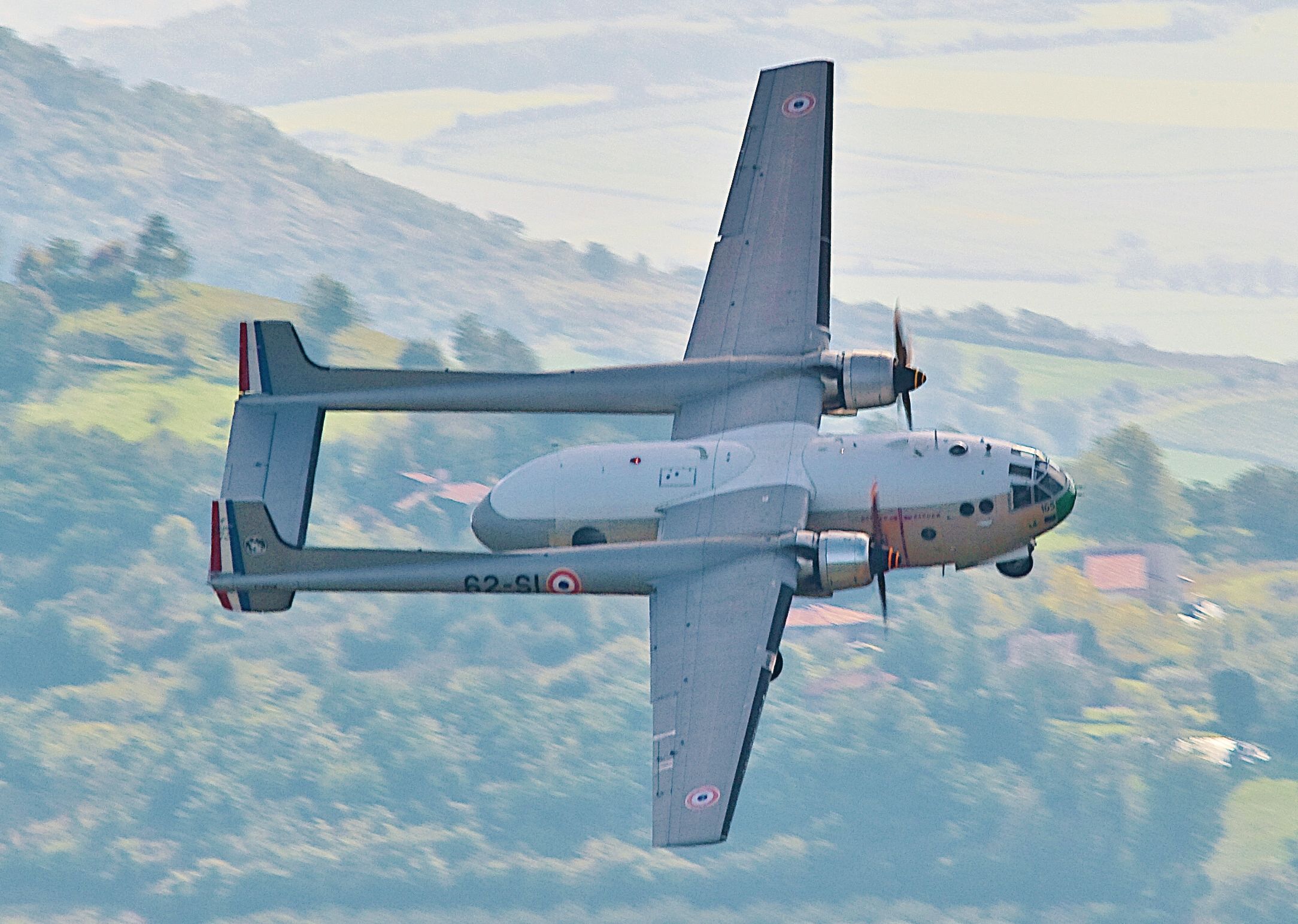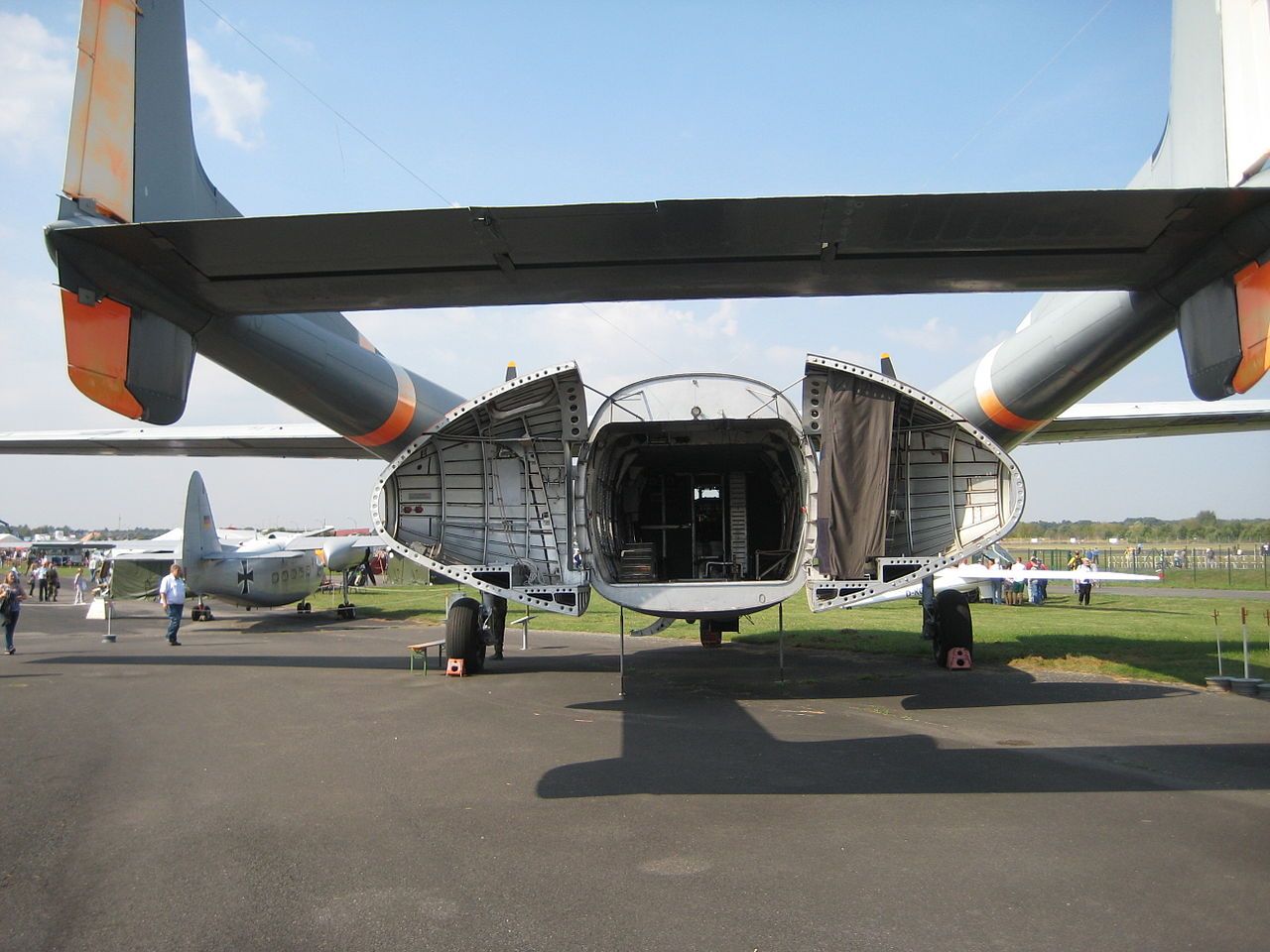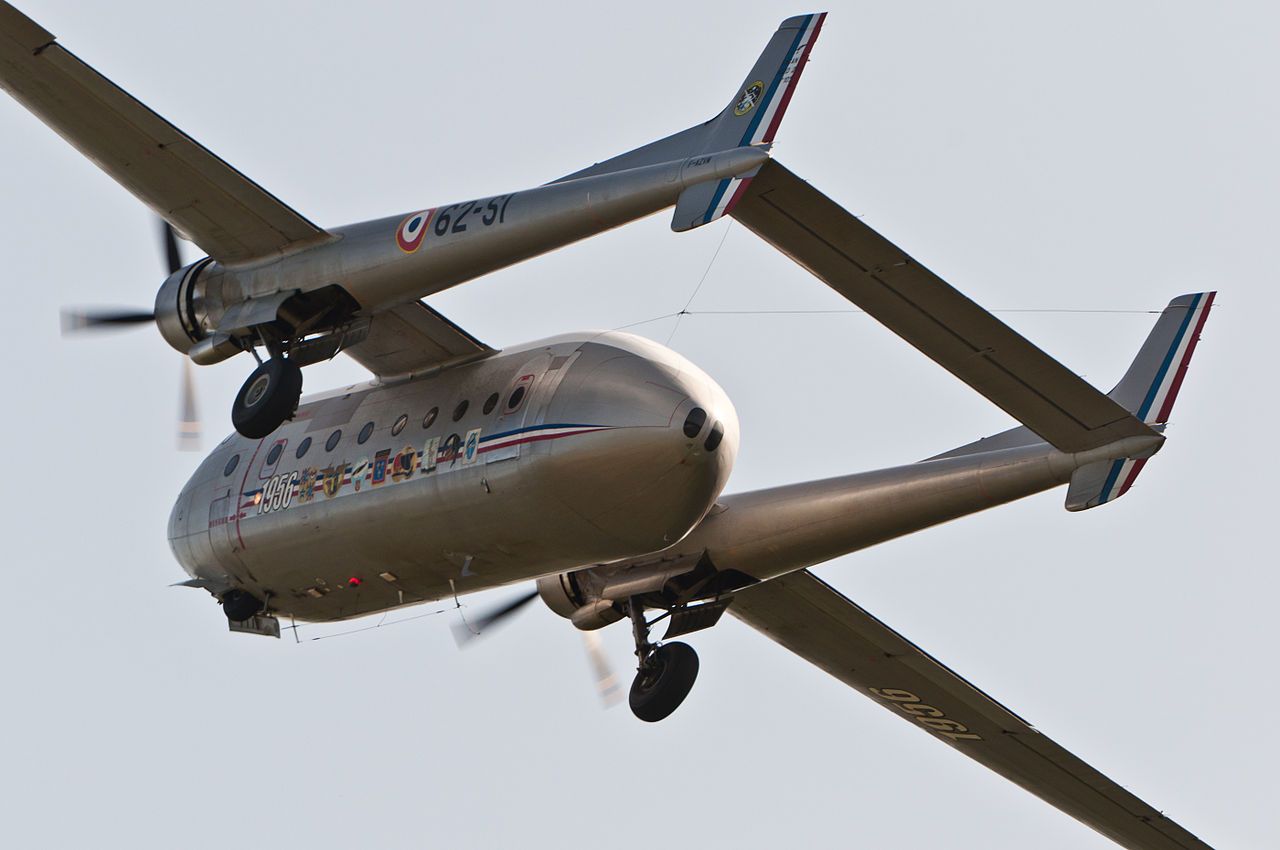Following the end of World War Two, the French Air Force found itself with two military transports, the German Junkers Ju 52, which for a short while, was manufactured in France. The second aircraft was surplus American Douglas C-47 Skytrains developed from the civilian Douglas DC-3.
While both of these planes were known for their reliability, they also featured tailwheel landing gear and side loading doors, neither of which was good for loading and unloading cargo.
The French military wanted a modern cargo aircraft
In 1947, looking to modernize the military, France's Direction Technique Industrielle (DTI) organized a competition for aircraft manufacturers to develop a modern medium-weight cargo aircraft. In response to this Société Nationale de Construction Aéronautique du Nord (SNCAN) came up with an innovative design that featured rear clamshell doors.
Several other French manufacturers came up with their designs, but the idea of being able to load and unload the plane from the large rear doors won the argument. Called the "Nord 2500," two prototype aircraft were ordered for testing.
On September 10, 1949, 73 years ago, the first prototype powered by Gnome-Rhône 14R engines made its maiden flight. Flight tests proved that the engines were just not powerful enough and that a replacement needed to be found. In their place, Nord swapped them out for twin Bristol Hercules 738/9 engines and four-blade Rotol propellors.
The new model was renamed the Nord 2501 and immediately impressed people with its improved performance. Three more test aircraft were ordered, and the plane began testing against the American Fairchild C-82 Packet. Of the two aircraft, the Nord was considered superior leading to an initial order for 34 planes. Tragedy struck in the summer of 1952 when the prototype aircraft crashed, killing the pilot. Despite the setback, the program continued fulfilling the initial contract on January 9, 1953. Pleased with the plane, the French Air Force ordered a further 174 aircraft.
The French Air Force loved the Noratlas
During its time with the French Air Force, the Noratlas, as it was now called, was predominantly used as a cargo carrier. Ten though were fitted out to carry passengers.
During the 1956 Suez Crisis, when Egyptian president Gamal Abdel Nasser nationalized the Suez Canal, a vitally important waterway for European nations, the French and British sent troops to protect their interests. The French used the Noratlas to rapidly deploy paratroopers south of Port Said and Port Fouad.
After the Algerian War of Independence in 1962, many cargo carriers were converted to play additional roles, such as electronic warfare. Now called the Nord Gabriel, eight aircraft went on to serve in the French military until being retired from service in 1989. Besides the French Air Force, the Noratlas proved popular with the German, Israeli, Greek, and Portuguese military. As for civilian use, the plane did not prove as popular as it was with the military, and with slow sales, marketing of the aircraft for civilian use stopped.
Specifications and general characteristics
- Crew: 4-5
- Capacity: 45 soldiers, 36 paratroopers, 18 patients with medics, or 18,647 lbs cargo
- Length: 72 feet 1 inch
- Wingspan: 106 feet 8 inches
- Height: 19 feet 8 inches
- Wing area: 1,089 square feet
- Empty weight: 28,825 lbs
- Max takeoff weight: 45,422 lbs
- Fuel capacity: 1,344.6 US gallons
- Powerplant: 2 × SNECMA-manufactured Bristol Hercules 738 14-cylinder air-cooled sleeve-valve radial piston engines, (2,089 hp)
- Maximum speed: 270 mph or 252 mph when fully loaded
- Cruise speed: 201 mph
- Range: 1,600 miles
- Service ceiling: 24,600 feet
- Rate of climb: 1,230 feet/minute
- Take-off run: 2,165 feet
- Landing run: 1,378 feet with reverse pitch



